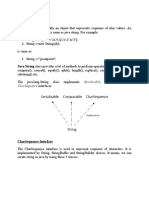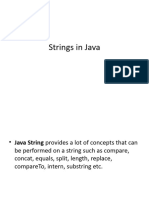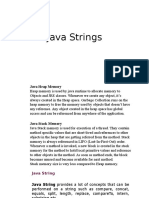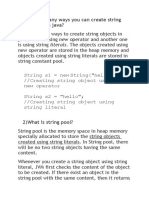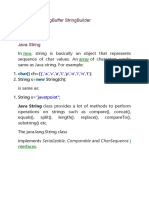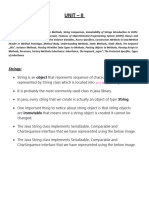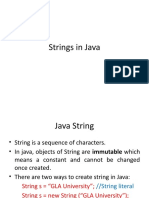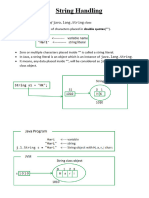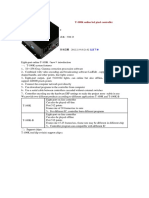0% found this document useful (0 votes)
51 views20 pagesArrays and Strings
The document provides an overview of arrays and strings in Java, detailing their creation, initialization, and key characteristics. It explains the concept of immutable strings, the string constant pool, and various methods associated with string manipulation. Additionally, it covers wrapper classes, their significance, and the processes of autoboxing and unboxing in Java.
Uploaded by
batraaryan03Copyright
© © All Rights Reserved
We take content rights seriously. If you suspect this is your content, claim it here.
Available Formats
Download as PDF, TXT or read online on Scribd
0% found this document useful (0 votes)
51 views20 pagesArrays and Strings
The document provides an overview of arrays and strings in Java, detailing their creation, initialization, and key characteristics. It explains the concept of immutable strings, the string constant pool, and various methods associated with string manipulation. Additionally, it covers wrapper classes, their significance, and the processes of autoboxing and unboxing in Java.
Uploaded by
batraaryan03Copyright
© © All Rights Reserved
We take content rights seriously. If you suspect this is your content, claim it here.
Available Formats
Download as PDF, TXT or read online on Scribd
/ 20















